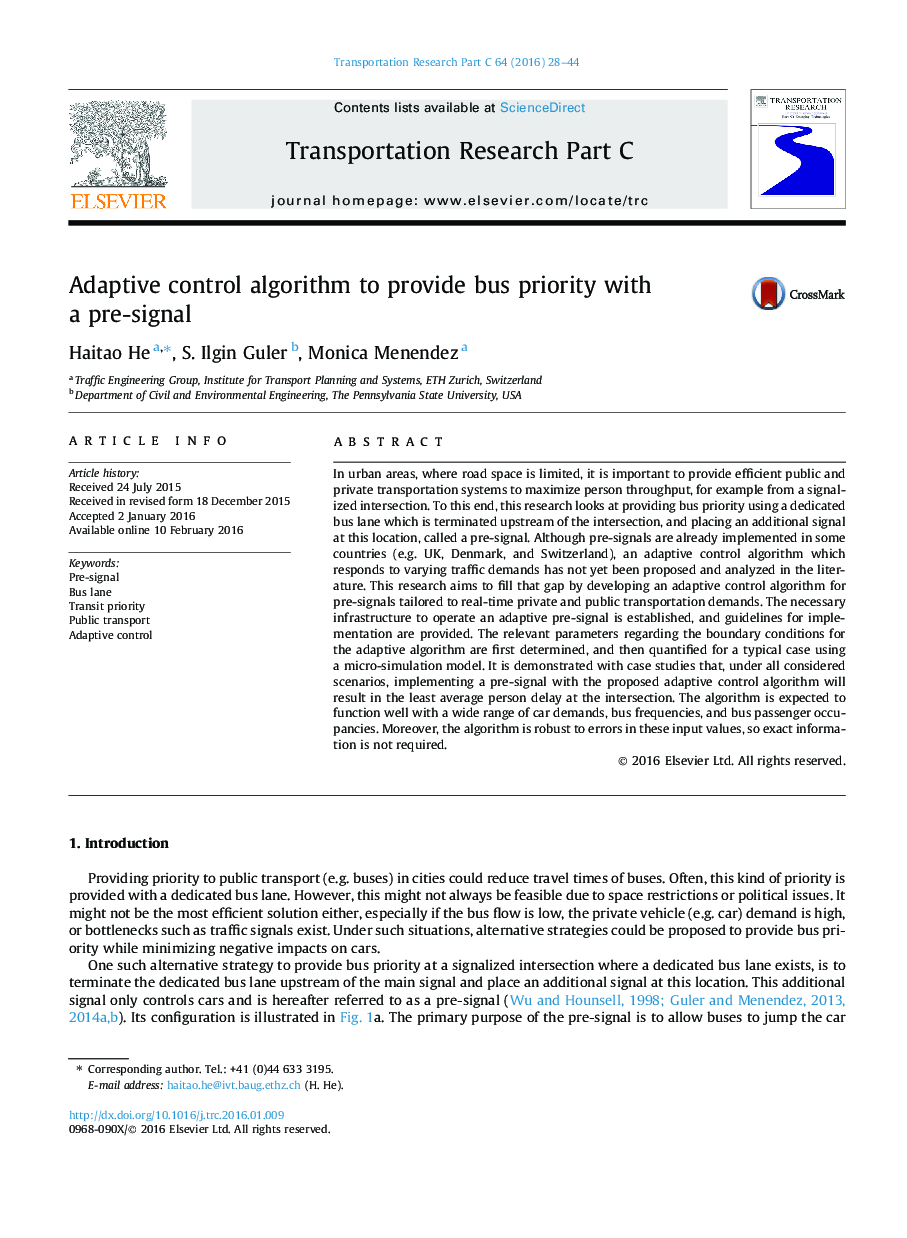| کد مقاله | کد نشریه | سال انتشار | مقاله انگلیسی | نسخه تمام متن |
|---|---|---|---|---|
| 526270 | 869086 | 2016 | 17 صفحه PDF | دانلود رایگان |
• First adaptive control algorithm for pre-signals.
• Algorithm combines multiple operation strategies at the intersection.
• Minimizes person delays at the intersection for both peak and off-peak traffic.
• Functions well with a wide range of input values and is robust to input errors.
• Necessary infrastructure for operation and guidelines for implementation provided.
In urban areas, where road space is limited, it is important to provide efficient public and private transportation systems to maximize person throughput, for example from a signalized intersection. To this end, this research looks at providing bus priority using a dedicated bus lane which is terminated upstream of the intersection, and placing an additional signal at this location, called a pre-signal. Although pre-signals are already implemented in some countries (e.g. UK, Denmark, and Switzerland), an adaptive control algorithm which responds to varying traffic demands has not yet been proposed and analyzed in the literature. This research aims to fill that gap by developing an adaptive control algorithm for pre-signals tailored to real-time private and public transportation demands. The necessary infrastructure to operate an adaptive pre-signal is established, and guidelines for implementation are provided. The relevant parameters regarding the boundary conditions for the adaptive algorithm are first determined, and then quantified for a typical case using a micro-simulation model. It is demonstrated with case studies that, under all considered scenarios, implementing a pre-signal with the proposed adaptive control algorithm will result in the least average person delay at the intersection. The algorithm is expected to function well with a wide range of car demands, bus frequencies, and bus passenger occupancies. Moreover, the algorithm is robust to errors in these input values, so exact information is not required.
Journal: Transportation Research Part C: Emerging Technologies - Volume 64, March 2016, Pages 28–44
